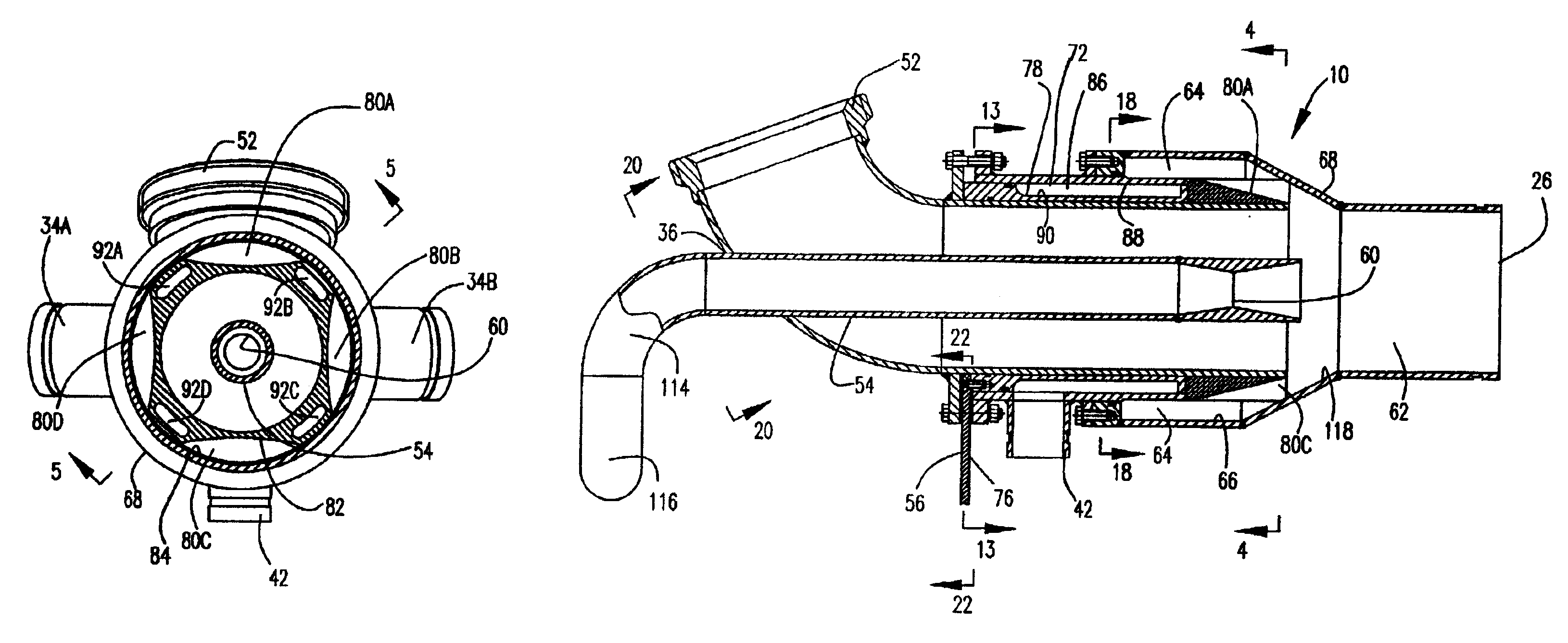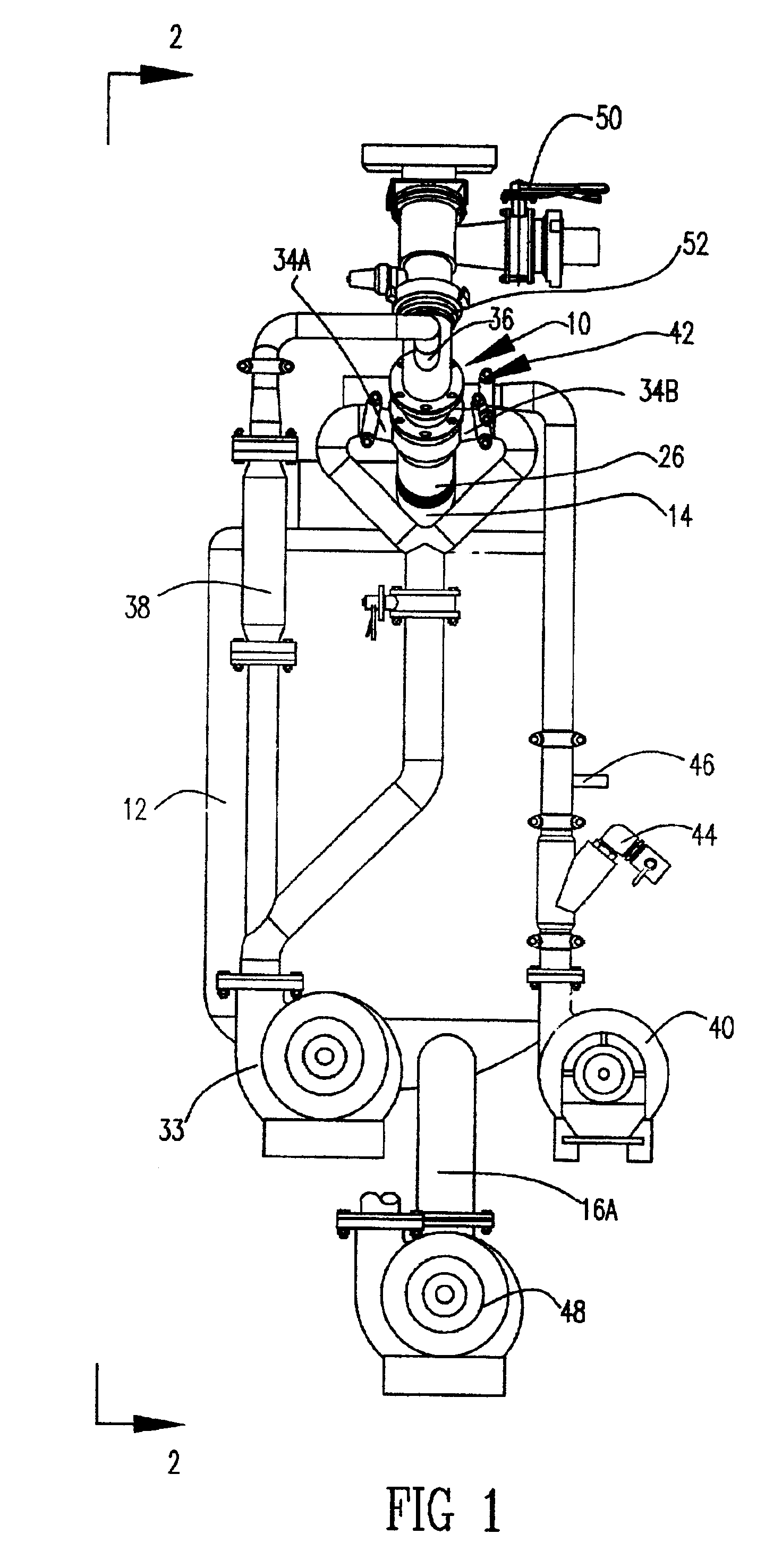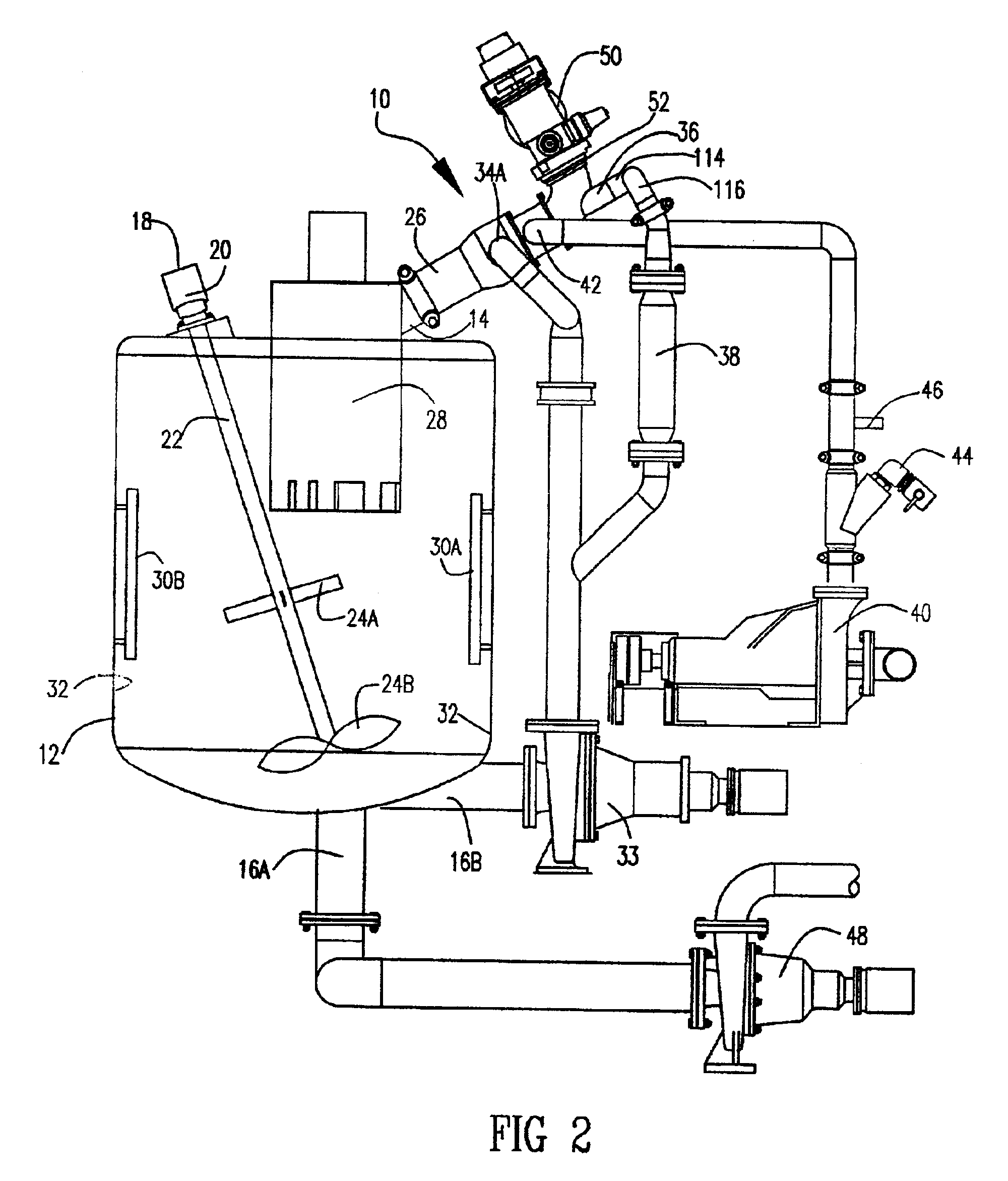Cement mixing system for oil well cementing
a cement mixing and oil well technology, applied in the field of high efficiency, high energy slurry mixers, can solve the problems of high equipment and labor intensity, large equipment investment, and high cost of space and weight capacity, and batch mixers use valuable space and add to rig weigh
- Summary
- Abstract
- Description
- Claims
- Application Information
AI Technical Summary
Benefits of technology
Problems solved by technology
Method used
Image
Examples
Embodiment Construction
Referring now to the drawings, the present invention is a cement mixing system and mixer 10 for mixing cement that will be used in cementing oil wells. The overall typical system within which the mixer 10 is likely to be used is illustrated in FIGS. 1 and 2. The mixer discharges into a mixing tank 12, which is similar to other mixing tanks found in literature and in practice. The tank 12 is designed for continuous mixing with a steady throughput rate with a tank inlet 14 for incoming fluids and one or more tank outlets 16A and 16B for discharging mixed fluids. The tank 12 is equipped with an agitator 18 for further mixing and homogenizing the contents of the tank 12. The agitator 18 is comprised of a motor 20, shaft 22, and various agitator blades 24A, 24B, etc.
An outlet 26 of the mixer 10 is attached to the tank inlet 14, and the tank inlet 14 is attached to a passive separator device 28 which centrifugally separates air from the liquid mixture. Fixed plates 30A, 30B, etc are attac...
PUM
| Property | Measurement | Unit |
|---|---|---|
| pressure | aaaaa | aaaaa |
| size | aaaaa | aaaaa |
| outer diameter | aaaaa | aaaaa |
Abstract
Description
Claims
Application Information
 Login to View More
Login to View More - R&D
- Intellectual Property
- Life Sciences
- Materials
- Tech Scout
- Unparalleled Data Quality
- Higher Quality Content
- 60% Fewer Hallucinations
Browse by: Latest US Patents, China's latest patents, Technical Efficacy Thesaurus, Application Domain, Technology Topic, Popular Technical Reports.
© 2025 PatSnap. All rights reserved.Legal|Privacy policy|Modern Slavery Act Transparency Statement|Sitemap|About US| Contact US: help@patsnap.com



